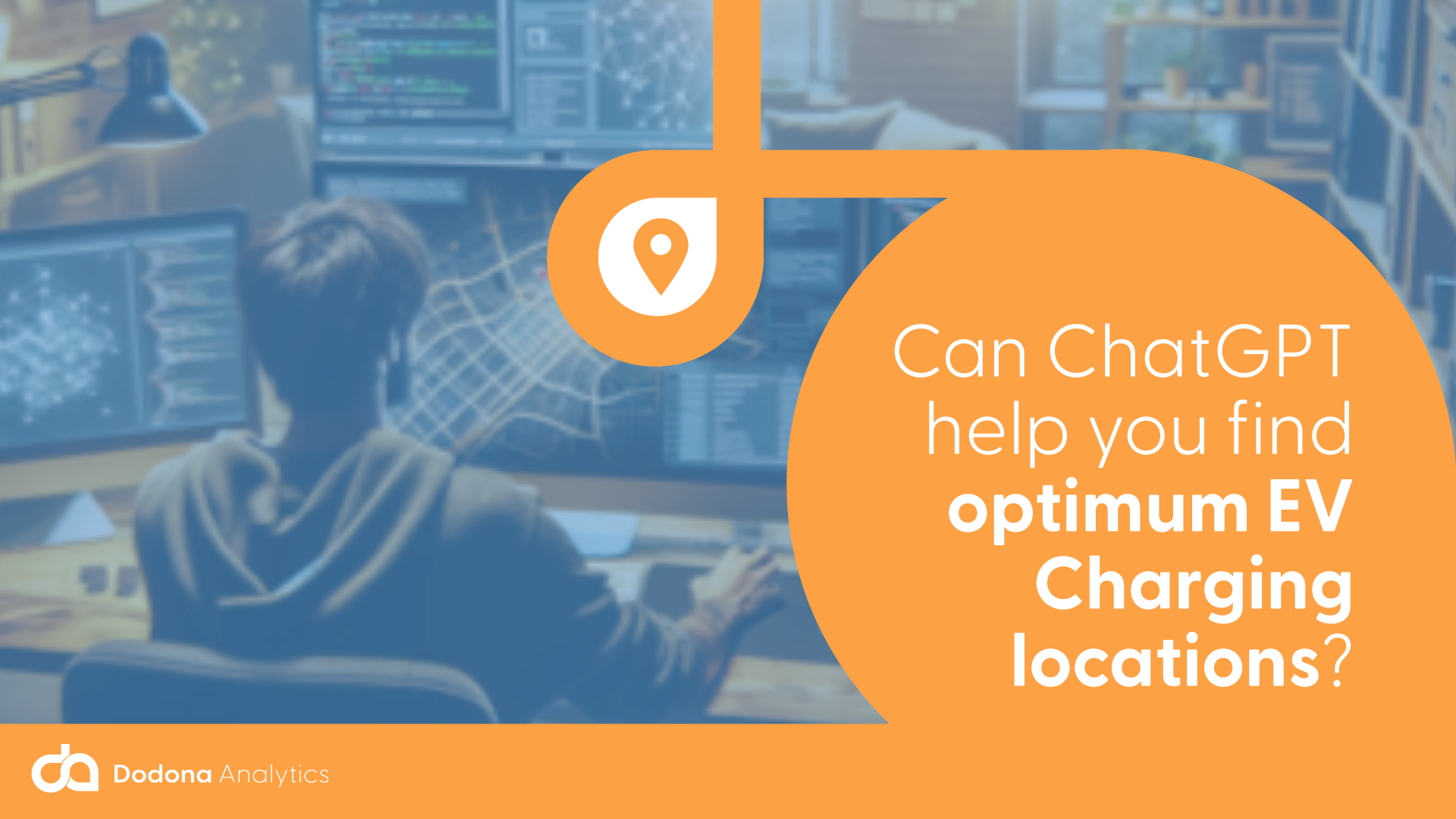In this article, our Head of Engineering, Boris Marn, experiments with OpenAI‘s ChatGPT to analyze its potential to assist network planning teams in identifying optimal EV charging locations. It’s a complicated task; are these generalized tools ready yet?
When building e-mobility infrastructure, equipping planners with detailed geographical data is crucial for optimising charger installation locations.
The primary challenge in understanding a site’s feasibility is figuring out its proximity to a whole list of locations, from its accessibility to the existing power grid to the availability of places for people to go while they are charging, like coffee shops and restaurants, to traffic levels and being in neighbourhoods with a high proposition of electric cars.
Geographic data expressed as polygons, lines, or points is used to map these locations and their proximity to one another, which is a significant data and visualisation challenge.
To solve this problem, we’ve created a complex framework pulling data from more than fifty sources, a machine learning algorithm to make sense of it and a simple API for asking questions about geographical data—be it polygons, lines, or points—to yield precise insights.
These insights are then delivered through a simple user interface, with data customized to meet each client’s unique needs, who can then simply see on a map all of these data points, from household income to whether there is a hospital within walking distance.
This gives planners an instant, detailed picture of the feasibility and viability of a potential charging site, whether the client is considering the suitability of slow AC chargers for residential areas with off-street parking and fast DC chargers for busy highways.
But enough about our product, what if we asked ChatGPT to do this work?
Let’s try using Large Language models!
We experimented with ChatGPT to learn if generative AI can replace or complement the current framework.
Before we started providing data to the algorithm, and making our own rules, we rather asked ChatGPT if he could provide us with any details for a specific point on the street. Is this location suitable for any charger?
The answer was broad and, unfortunately, applicable to any location on earth, covering essential factors such as accessibility, proximity to essential networks, amenities, safety, power supply, demand, local regulations, visibility, and parking availability.
But I guess we can’t expect proper results here as the model is general and has not been trained on any specific data.
Let’s try a different approach. Let us see if the model does understand basic logic of points and polygons. I provided the model with a simple list of 6 points and one polygon. Do any of the points reside in the polygon?
Great! It seems there is some intelligence deep down somewhere!
Unfortunately, this is where the usefulness of ChatGPT stopped.
In the next attempts, I tried uploading or giving model access to bigger polygons. While the questions about the points inside of a polygon were usually correct, they were not always an all other inquiries failed completely.
I then tried further experimentation involving creating of a custom ChatGPT.
The answers were much better, and the journey was fun, but when it came to proximity questions, all the answers were wrong—or even produced hallucinations, if, for example, training data was for the UK, but questions revolved around Madagascar.
According to our research, hallucinations where models lie are here to stay for the foreseeable future, so this is a serious problem that diminishes the usability of Large Language Models.
What are the current limits to Large Language Models?
I frequently use ChatGPT when working or when I am simply interested in a topic I don’t know much about. Previously, I had to read a lot of documentation, for instance, how certain programming languages work, which I can now simply get on one page.
Using ChatGPT and other large language models, I realised that the more you know about a certain domain, the more the usefulness of large language models diminishes. This even becomes a hurdle as more and more complex questions produce more hallucinations or simply wrong results.
If you start using LLMs as a junior in a specific domain, you will benefit greatly, but if you are an expert, you will see this tool producing more problems than solutions.
Despite these challenges, the potential of AI in e-mobility planning is undeniable. The AI field is rapidly advancing, with new tools and improvements introduced regularly, driving a dynamic and promising ecosystem.
Using ChatGPT and other large language models, I realised that the more you know about a certain domain, the more the usefulness of large language models diminishes. This even becomes a hurdle as more and more complex questions produce more hallucinations or simply wrong results.
So for now, based on my experiments, the answer to the question I posed in the title, “Can chatGPT help you find optimum EV charging locations?” is no. Or maybe, not yet.





